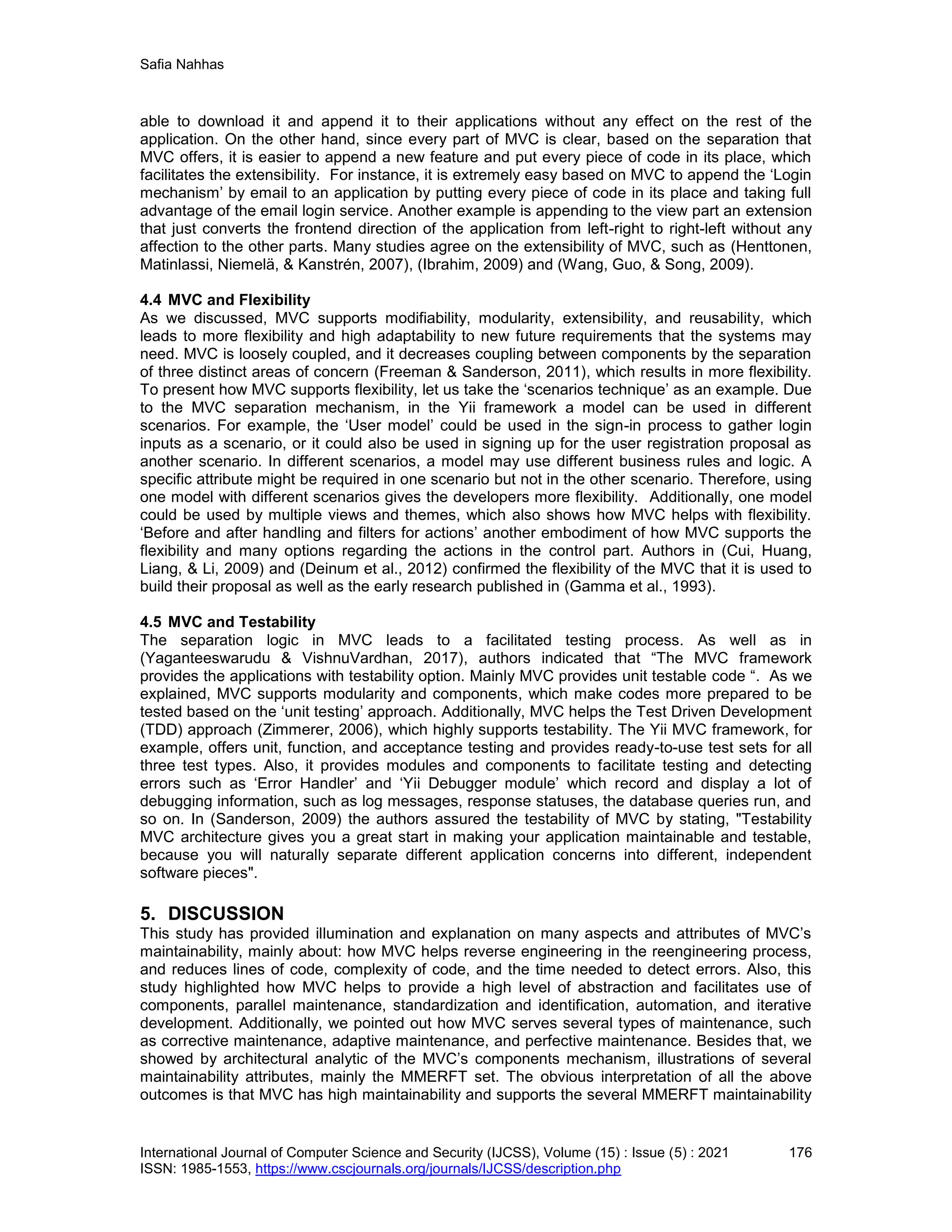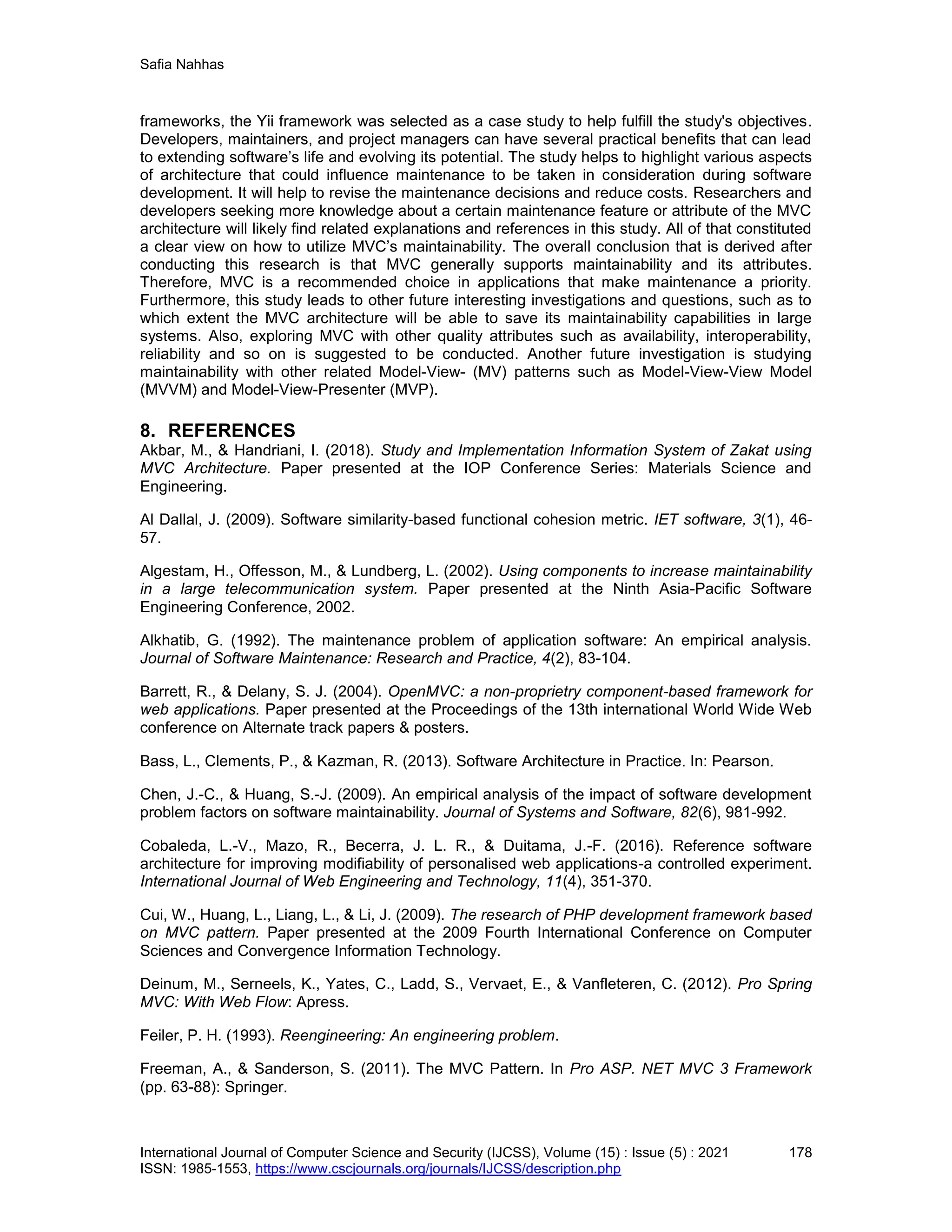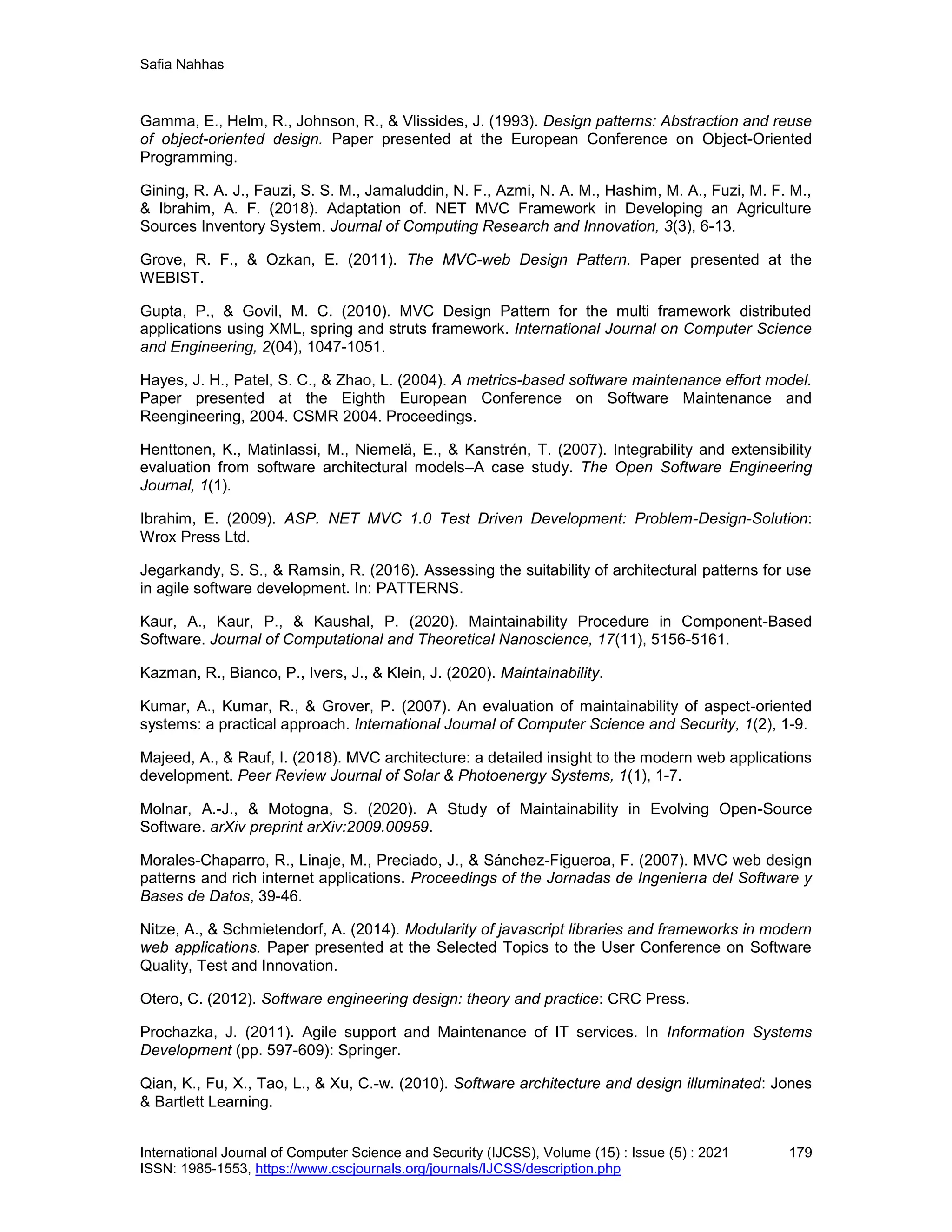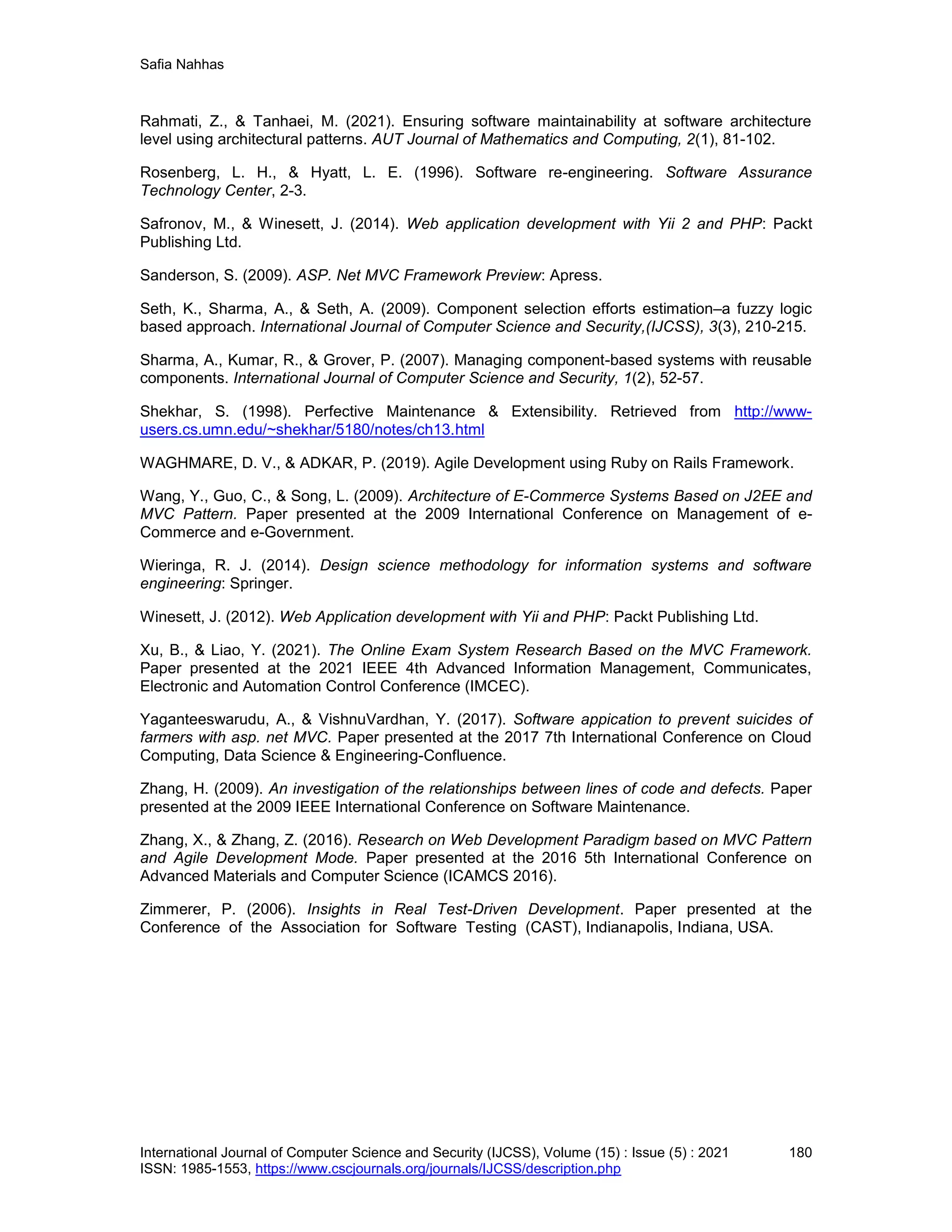This paper explores the Model-View-Controller (MVC) architecture from a maintenance perspective, focusing on its support for maintainability quality attributes such as modifiability, modularity, extensibility, reusability, flexibility, and testability. It discusses various measures and approaches that enhance maintenance, including reduced code complexity and the use of components, which can facilitate maintenance efforts and reduce costs. The study concludes that MVC architecture is effective in promoting maintainability, making it a preferred choice when maintenance is a priority.
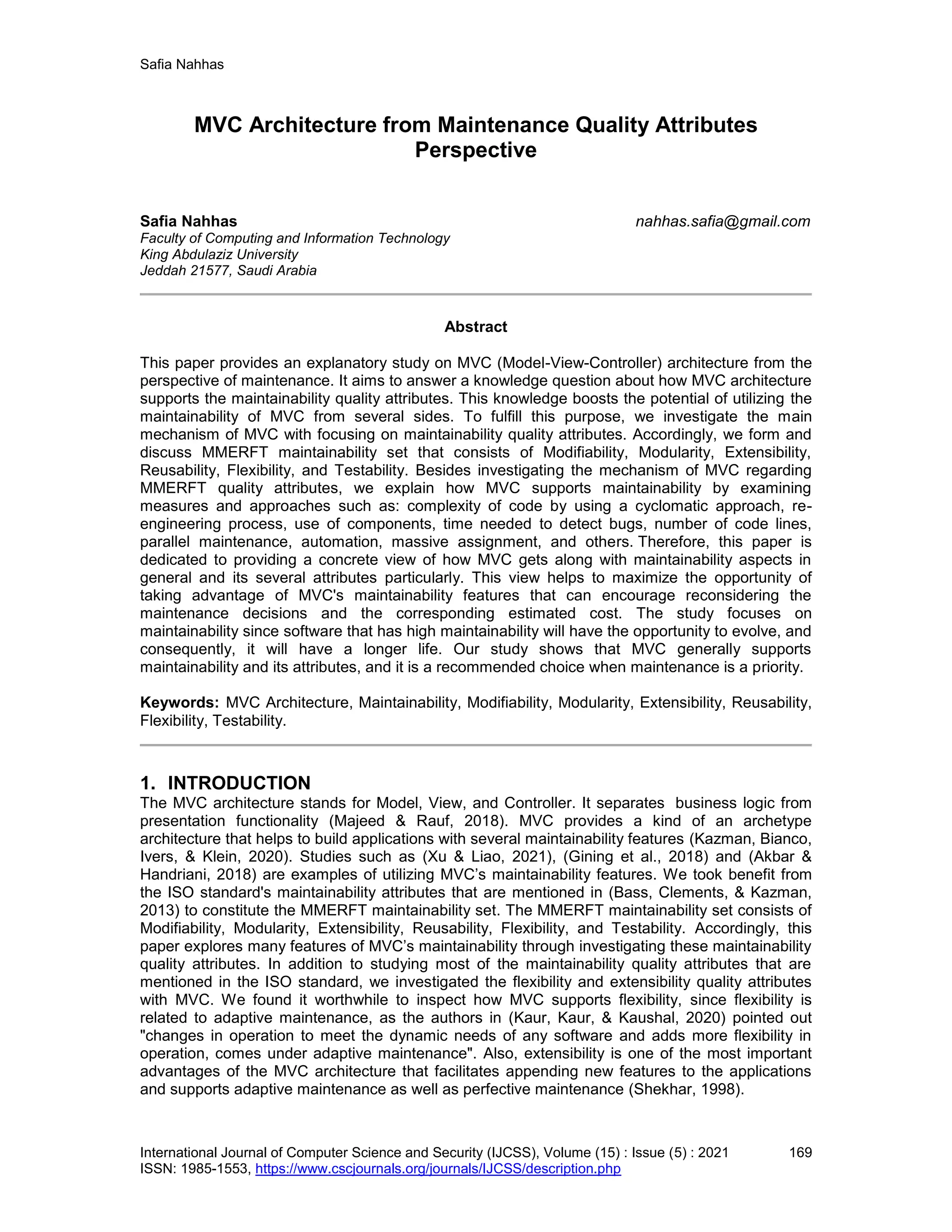
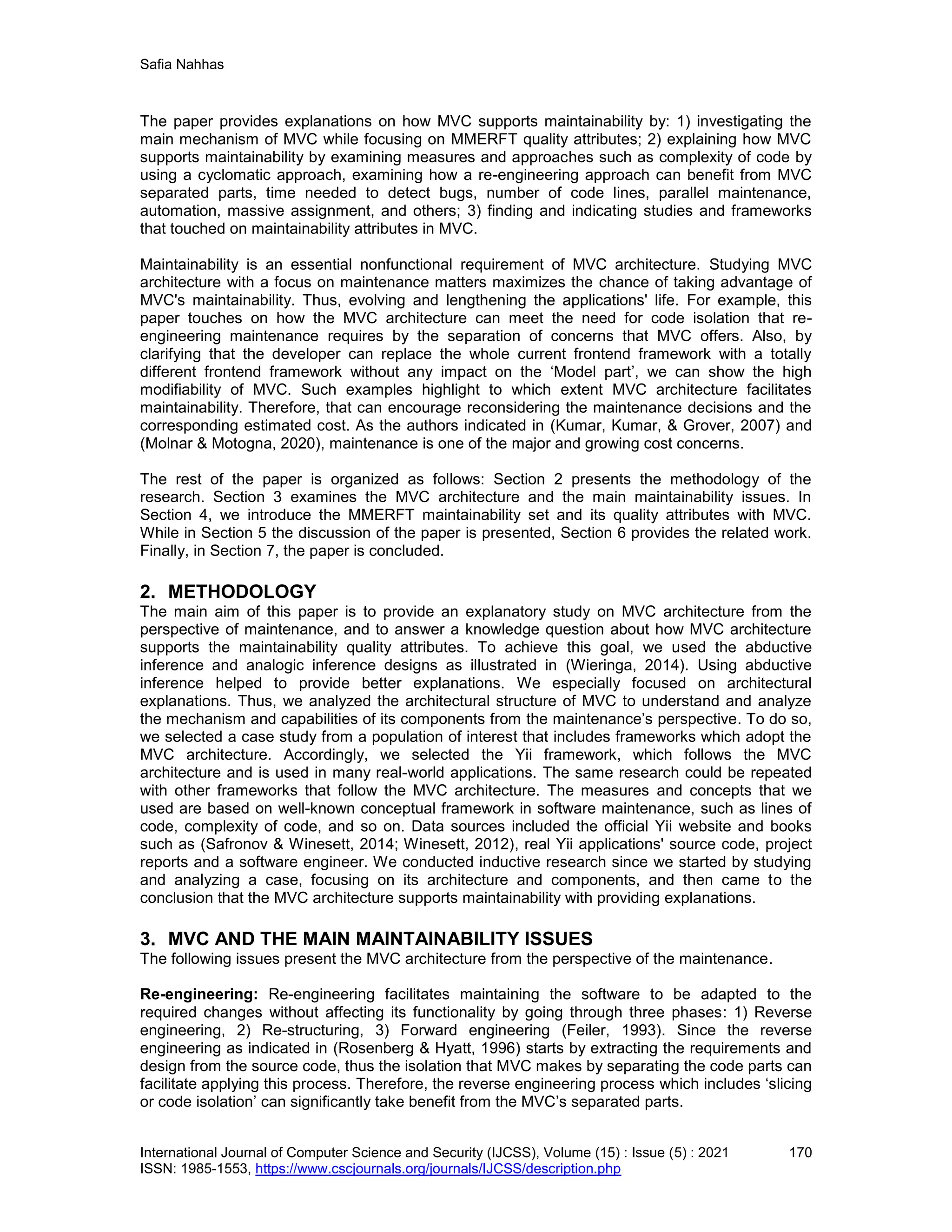
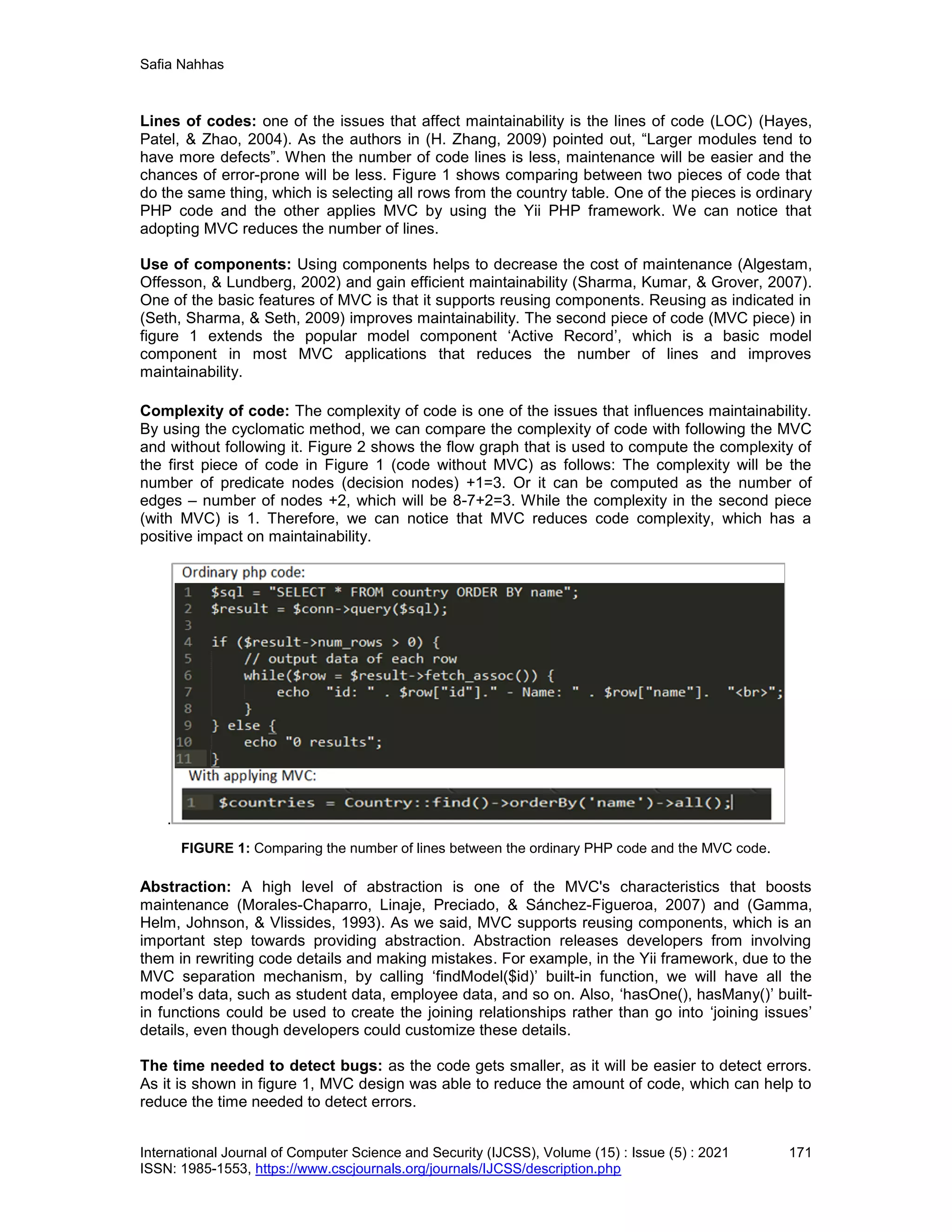
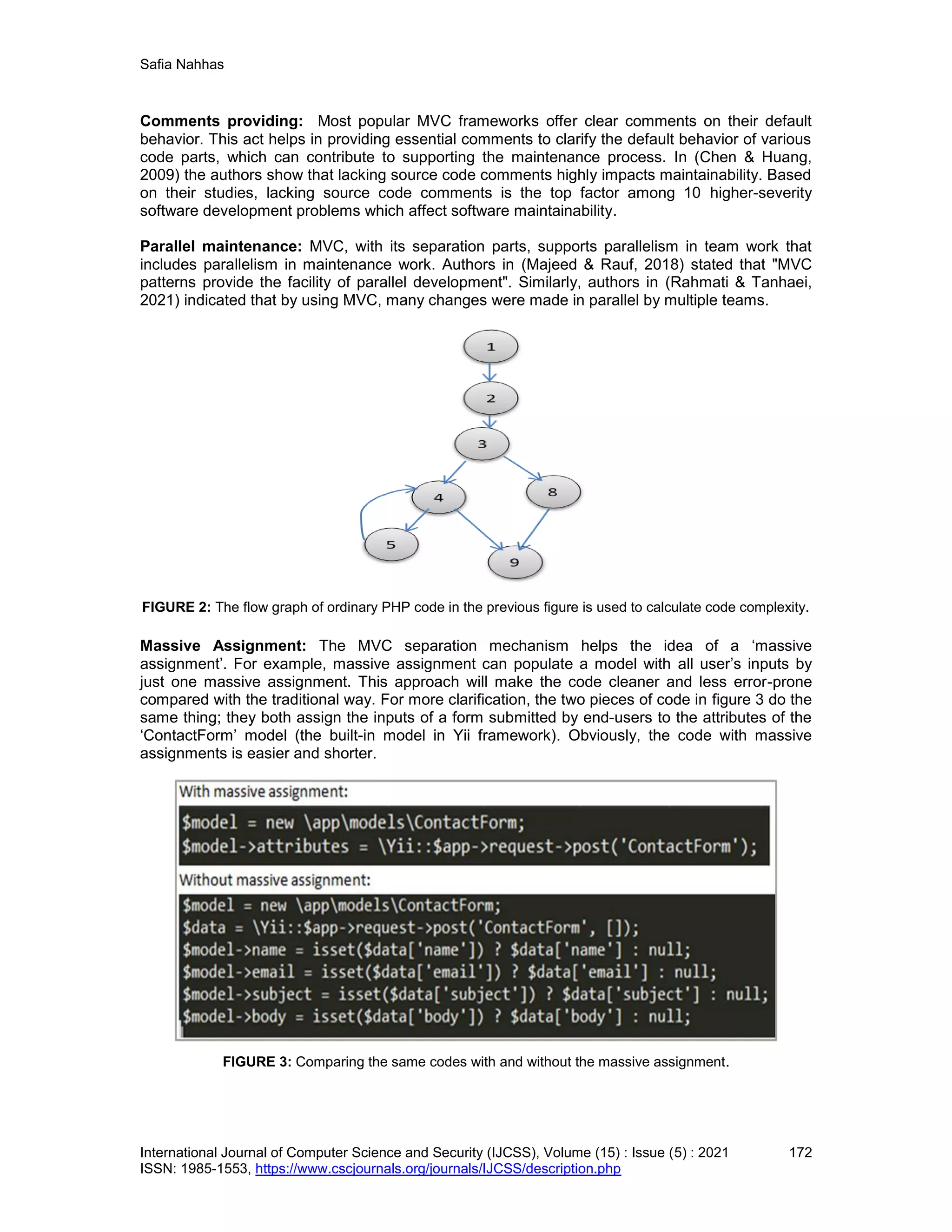
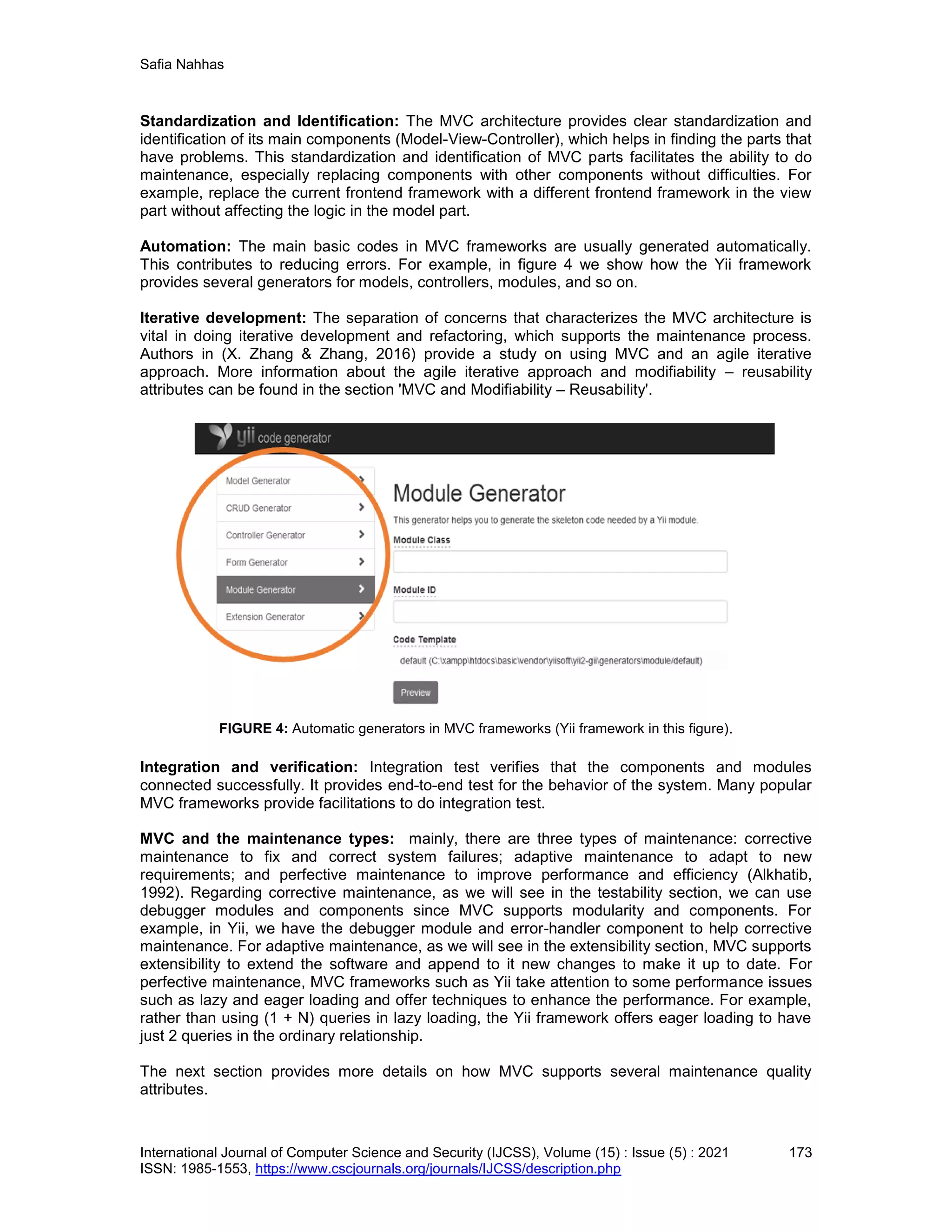
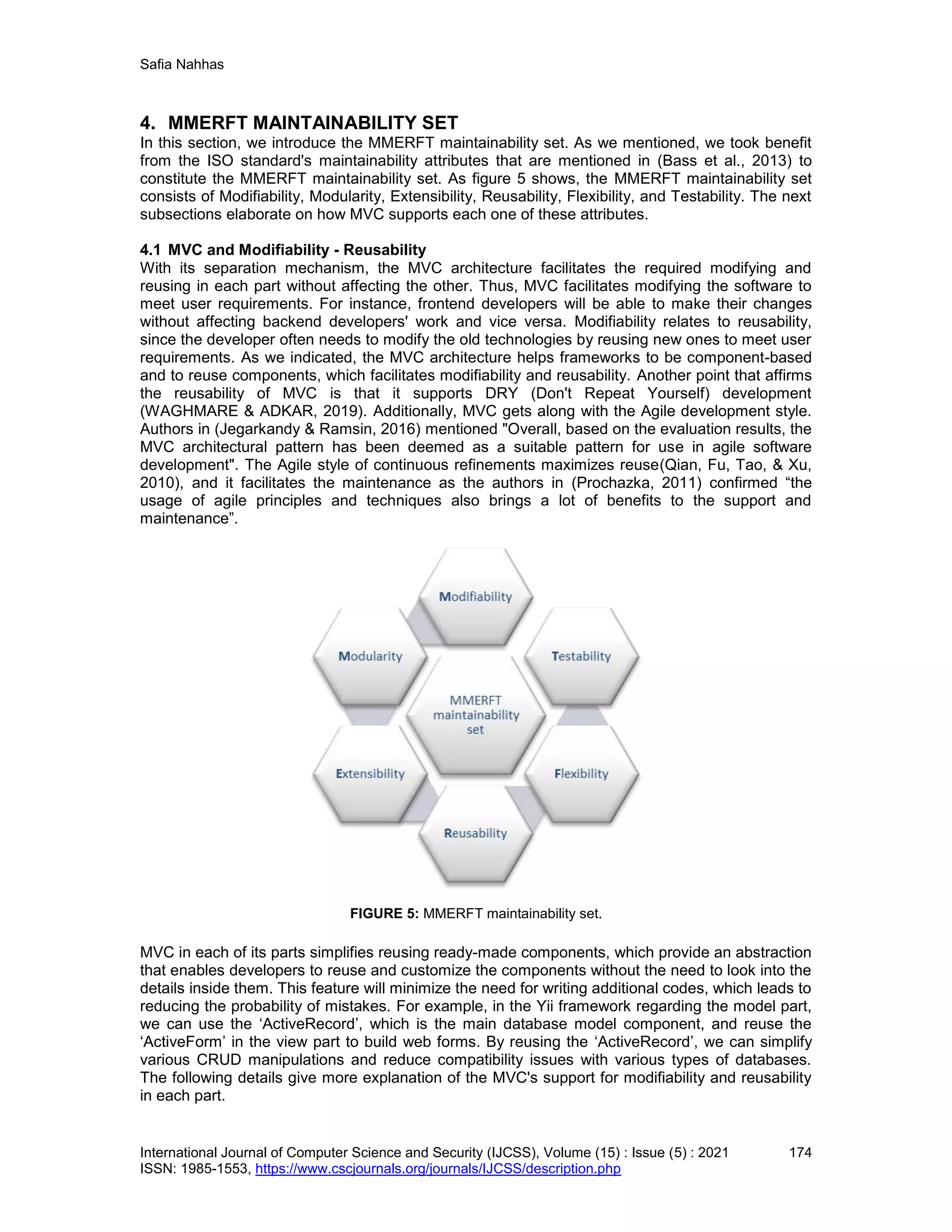
![Safia Nahhas
International Journal of Computer Science and Security (IJCSS), Volume (15) : Issue (5) : 2021 175
ISSN: 1985-1553, https://www.cscjournals.org/journals/IJCSS/description.php
In Model part: Based on MVC, which assigns a specific part for the data-related logic (Model)
and another part for visualizing data (View), that helps make the reuse process based on each
part. For example, in the model part, validation rules for the attributes (such as required, string,
integer, max and so on) are something that can be reused rather than inventing it each time.
Furthermore, these validation rules can be customized and modified based on the requirements.
For instance, in the Yii MVC framework, customizing the error message of any rule is available by
specifying the message property when declaring the rule as follows:
public function rules()
{ return [
['username', 'required', 'message' => 'Please choose a username.'],
];}
In view part: Since MVC separates the business logic of data from the visualization of data, the
designer will be able to modify and change the current frontend framework such as the Blueprint
CSS framework and reuse other different front-end frameworks such as Bootstrap without any
effect on the logic in the model part. Also, modifying and reusing a new theme to rejuvenate the
application by using the MVC mechanism becomes very easy. For example, in the Yii framework,
it just requires reusing the new layout by putting it in its folder under the view part without any
effect on other parts. The same thing goes with reusing and customizing ‘Widgets’, which is a
very important aspect of frontend designing. Widgets are reusable building blocks used in views
to create complex and configurable user interface elements in an object-oriented fashion.
‘Gridview’ is an example of one of the famous widgets in different web frameworks which enables
developers to build very interactive tables with pagination, sorting, and so on with just a few lines
of code.
In controller part: The controller part in MVC frameworks is usually composed of actions. One of
the concepts that shows how MVC architecture facilitates reusability in the controller part is
‘Standalone’ actions. Standalone actions are usually created to be reused in different controllers
or to be redistributed as extensions.
Hence, due to MVC, it has become easier to use famous patterns and components based on
each part with a few lines and effective results, such as (ActiveRecord, ActiveForm, Gridview,
DataProvider, User Model) which are essential for almost every web application. The straight
consequence of reusing will be fewer lines of code, thus fewer errors and bugs. In their research
(Cobaleda, Mazo, Becerra, & Duitama, 2016) the authors explained how they used the MVC
architecture to provide a reference software architecture for improving the modifiability of
personalized web applications. Additionally, in (Otero, 2012) authors confirmed the modifiability
and reusability of the MVC architecture and mentioned that MVC is "easy to exchange, enhance
and add additional user interfaces".
4.2 MVC and Modularity
Since modules are supposed to have high cohesion and low coupling, modularity is an essential
factor in supporting maintainability (Al Dallal, 2009). High cohesion is one of the important metrics
in maintainability (Hayes et al., 2004). In many frameworks, MVC is used to build the modules,
thus the modules themselves are composites of models, views, controllers, and possibly other
components (Safronov & Winesett, 2014). Hence, MVC can help to build the modules based on
its architecture, which contributes to supporting modularity and enhancing maintainability. The
role of MVC in supporting modularity has been touched upon by authors in (Nitze &
Schmietendorf, 2014) and (Grove & Ozkan, 2011).
4.3 MVC and Extensibility
Extensions facilitate adapting the applications to new requirements, which is an important aspect
of maintenance (Shekhar, 1998). Extensions can be built as a module or group of modules that
can take advantage of the MVC architecture. For example, in the Yii framework, any developer
can build an extension based on the MVC module structure, then put it publicly and others will be](https://image.slidesharecdn.com/ijcss-1636-211124053230/75/MVC-Architecture-from-Maintenance-Quality-Attributes-Perspective-7-2048.jpg)
